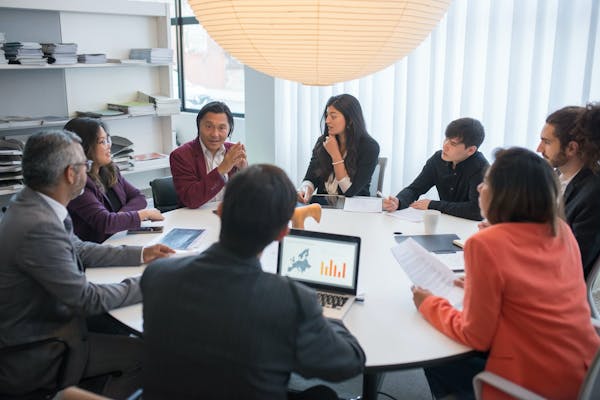Best Practices for Managing a Multigenerational Workforce

Written by Sean Li • November 2, 2023

The workplace is changing in many ways, particularly in the past few years. With the general population living longer and more people finding flexible ways to work, the workforce is now truly multigenerational.
Having a multigenerational workforce comes with many benefits, such as increasing the diversity in perspectives, boosting innovative thinking, and supporting a robust professional pipeline. It also comes with some challenges, making it important to learn and understand how best to support people of all ages at your company.
Here are five best practices for managing a multigenerational workforce.
Fight biases
Right off the bat, when it comes to having individuals of all ages in the workplace, it’s important to address and resist biases.
There are many biases that we soak up as we go through society, starting when we’re very young, much to our detriment: images of the vapid Gen Z scrolling on their phone throughout the whole workday, the baby boomer who can’t get their computer to cast to the TV in the meeting room. The more we lean into these stereotypes, the less open we’ll be to the fact that everyone is multidimensional and unique.
To fight against age-related biases in the workplace, ask yourself these questions the next time that you’re feeling distressed because of a coworker:
- What narratives am I assuming about this person?
- Can this be a misunderstanding based on a difference between us?
- Am I leaning into a stereotype that stems from an aspect of this person’s identity?
Through reflection, you may find that your assumptions are unfair for your colleagues. With hope, we look forward to future generations growing up less impacted by age-related stereotypes and without biases.
Start a dialogue
After learning how to identify and resist age-related biases, it’s important to start a healthy dialogue between people of different ages in your team. Having conversations means that people learn more about each other. Often, the more that people know about one another, the more open they are to seeing their colleagues as more than just coworkers — and as whole people who even have lives outside of the office. Having intentional dialogues about what every person brings to the table when it comes to different perspectives can be a great way to jumpstart productive collaboration.
There are many ways to start a dialogue between people of different ages in the workplace, including calling it what it is or letting these things unfold naturally (and just giving it a bit of a push). Providing people ways to talk about themselves, such as their backgrounds and what they’ve experienced in the past, can be an excellent way to help them connect with one another.
Embrace different experiences
When it comes to these different and diverse experiences, the broader the better! Embracing what makes people unique — including their age — can be an affirming way to create a positive working environment.
Try using any of these affirming phrases to shift your language into embracing different experiences:
- “I hadn’t heard of that before, that’s so cool. Thanks for telling me about it!”
- “I feel like you might know more about this than me, would you mind please explaining it a bit? I would love to draw from your expertise!”
- “I think that I do things a little bit differently, maybe just differences in the way that we learned about this. I would love to hear more about how you went about learning this skill.”
Learn from one another
With diversity comes the opportunity for learning — the more diversity in a team, the more chances that each person has to learn more from their colleagues. Setting up an environment where people feel comfortable reaching out to each other, asking questions, and actively learning from one another can take your team a long way towards success.
Learning from one another can come in formal and informal ways. In a formal capacity, mentoring or setting up work buddies can be a great way to get people talking and witnessing new ways of working. You can also bring up different ways of attacking the same problem in team meetings or as a team bonding activity. If you want to informally encourage your colleagues to learn from one another, you can partner people up to complete tasks together and prompt them to work collaboratively.
Bring people together
Lastly, bringing people together is one of the best ways to manage a multigenerational workforce. Fulfillment and purpose stem from feelings of connection, so providing ample opportunity to build those connections can grow now only a team that trusts one another but a team that respects each other’s differences.
Bringing people together can look many different ways. Team lunches are a fun way to casually connect with one another, particularly if you have a good meal to gather around. Team celebrations, like for milestones, are another way to get the team around a central goal, encouraging people to work together and to feel good about what they’ve accomplished.
However you do it, managing a multigenerational workforce can be a fulfilling role. With a greater span of ages, you can have a diverse team that enjoys their differences rather than allowing those differences to hold them back. Setting up a positive environment that embraces differences in age means that everyone feels welcome and valued in the workplace.


